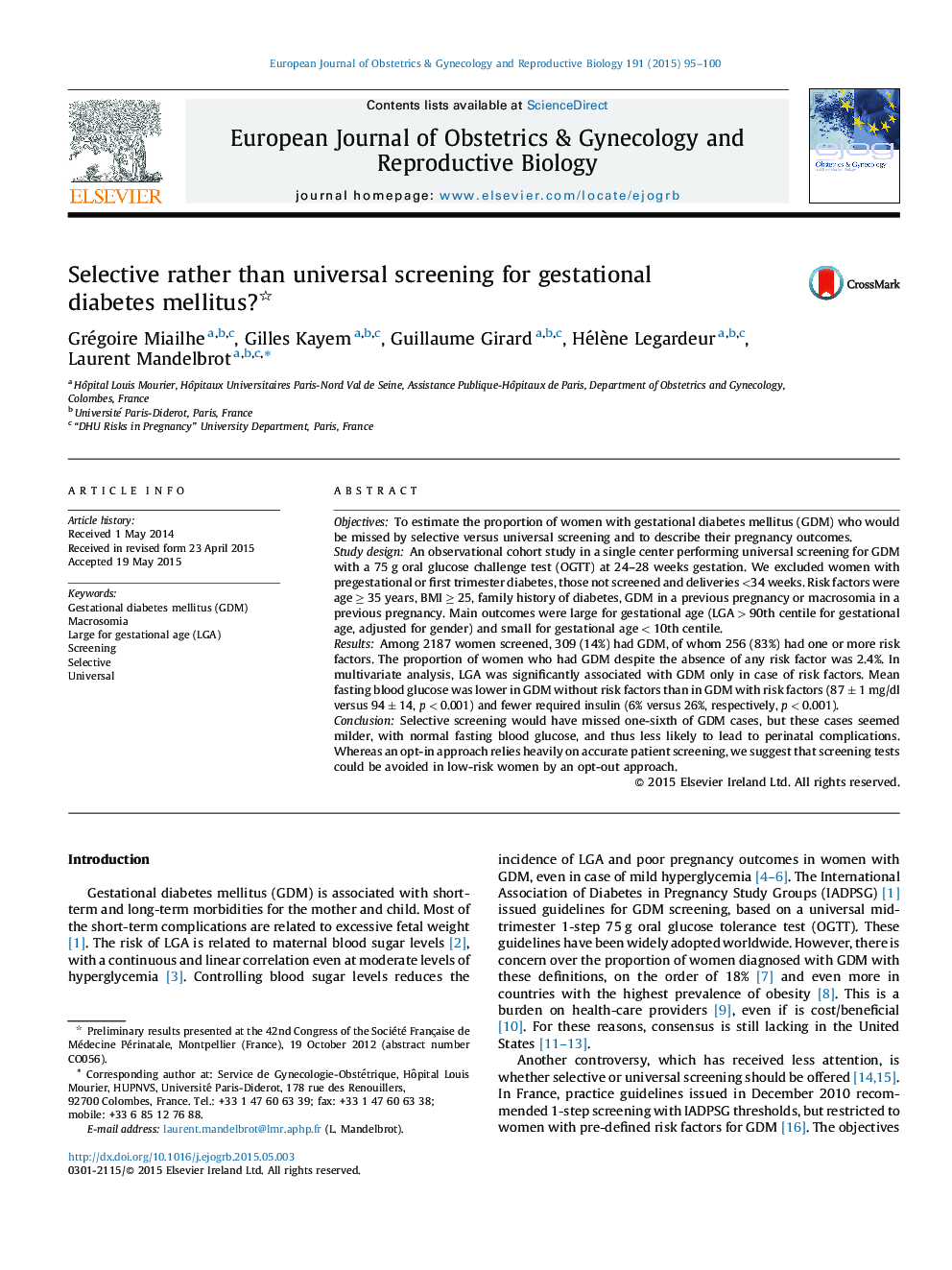| Article ID | Journal | Published Year | Pages | File Type |
|---|---|---|---|---|
| 3919532 | European Journal of Obstetrics & Gynecology and Reproductive Biology | 2015 | 6 Pages |
ObjectivesTo estimate the proportion of women with gestational diabetes mellitus (GDM) who would be missed by selective versus universal screening and to describe their pregnancy outcomes.Study designAn observational cohort study in a single center performing universal screening for GDM with a 75 g oral glucose challenge test (OGTT) at 24–28 weeks gestation. We excluded women with pregestational or first trimester diabetes, those not screened and deliveries <34 weeks. Risk factors were age ≥ 35 years, BMI ≥ 25, family history of diabetes, GDM in a previous pregnancy or macrosomia in a previous pregnancy. Main outcomes were large for gestational age (LGA > 90th centile for gestational age, adjusted for gender) and small for gestational age < 10th centile.ResultsAmong 2187 women screened, 309 (14%) had GDM, of whom 256 (83%) had one or more risk factors. The proportion of women who had GDM despite the absence of any risk factor was 2.4%. In multivariate analysis, LGA was significantly associated with GDM only in case of risk factors. Mean fasting blood glucose was lower in GDM without risk factors than in GDM with risk factors (87 ± 1 mg/dl versus 94 ± 14, p < 0.001) and fewer required insulin (6% versus 26%, respectively, p < 0.001).ConclusionSelective screening would have missed one-sixth of GDM cases, but these cases seemed milder, with normal fasting blood glucose, and thus less likely to lead to perinatal complications. Whereas an opt-in approach relies heavily on accurate patient screening, we suggest that screening tests could be avoided in low-risk women by an opt-out approach.
